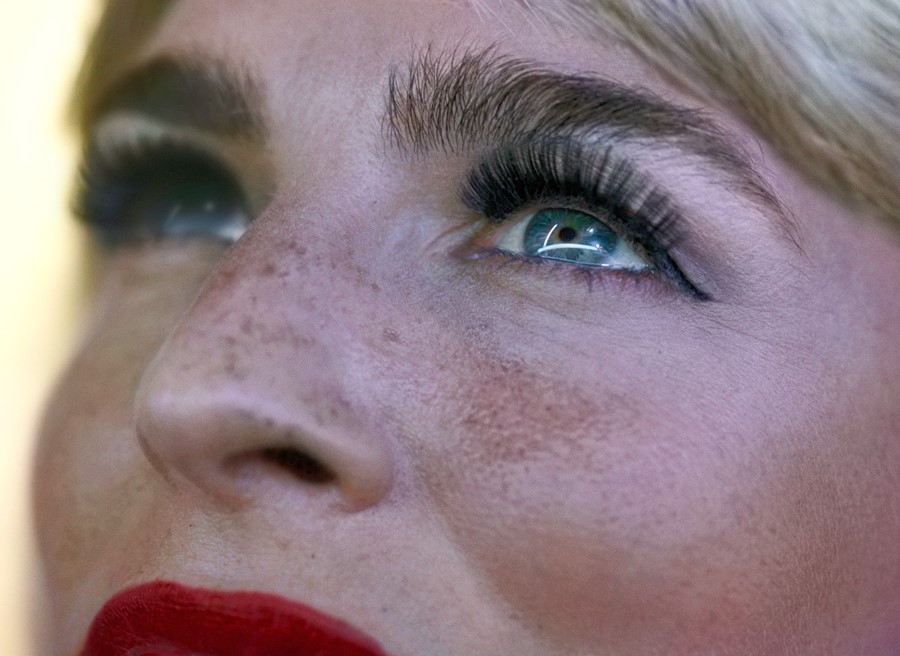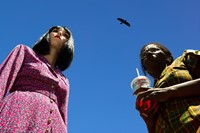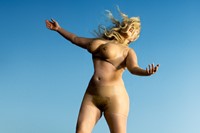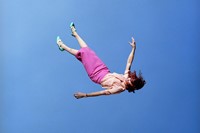As her dystopian new exhibition opens in New York, the American photographer and filmmaker talks about the allure of Hollywood and why “art is a fundamental urge to communicate and connect”
When the world got thrown off its axis in the beginning of 2020, American photographer and filmmaker Alex Prager anchored herself in her writing practice. “There was so much uncertainty and it was very hard to grasp what any kind of future might look like and how I might move forward with my dreams and plans I had,” Prager tells AnOther. “I decided just to write and it saved me in a way because I was able to do something invigorating and challenging at a time when I could have easily gone in another direction. I found my spirit again.”
With her new exhibition Part Two: Run opening January 19 at Lehmann Maupin in New York, Prager brings forth the latest chapter in her monumental exploration of contemporary life in photographs, film, and sculpture. Recognising we are deep in the midst of a massive shift rooted in the timeless cycle of death and rebirth, Prager employs her signature blend of style, wit, drama, and charm to stage a metaphorical scene that feels all too true to life.
With Part Two: Run, Prager picks up where Part One: The Mountain left off, using filmmaking as a way to bring a new allegory to life. While The Mountain represents the spiritual realm symbolised – the ecstatic pain and pleasure of rebirth – Run is the story of death and resurrection in the physical world. The story is simple: four people in suits unleash a massive mirrored pinball onto the street, mowing down all the random bystanders who have the misfortune to be at the wrong place at the wrong time. And though they are flattened upon impact, they rise again, offering hope for the future.
“I had four figures mirroring the mythic idea of the Four Horsemen of the Apocalypse bringing this ominous newness into the world,” Prager says. “It was important that the pinball be causative because I think there’s always some sort of intention behind an obstacle we face in our lives.” Possessed with an exquisite sense of beauty, melodrama, and absurdity in equal parts, Prager flawlessly transmutes her cinematic sensibilities into surreal tableaux of everyday life. Drawing inspiration from golden era period styles like film noir, Cinemascope, and Technicolor, the photographer uses a dazzling array of formal and conceptual practices to explore and confront the existential crises that shape our lives.
“Hollywood has taken mythology and repackaged it into movies,” says Prager. “They took very difficult subjects and packaged them in ways that were just so beautiful that you couldn’t take your eyes off them so that by the time you realised what the subject matter was, it was too late – you were already engaged and totally infatuated with what you were seeing.”
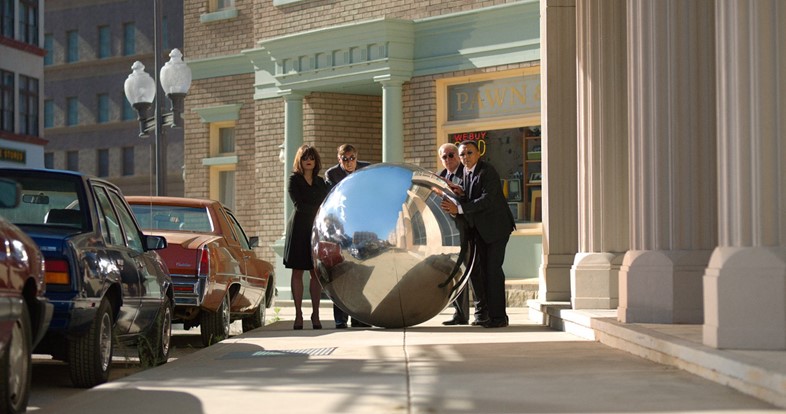
Recognising the importance of creating space to reflect on the challenges we face, Prager uses colour, lighting, and beauty to establish emotional and psychological distance from the matter at hand. “I’ve always used my art to give myself some sort of personal relief,” she says. “Some things may be very difficult if you just expose them raw, but you can put anything you want just beneath the surface. These other layers allow me to say whatever I’m struggling with and ask questions that become overwhelming if I’m just having a conversation with someone.”
By returning to her writing practice as the crux of her work, Prager honed her talent for mystical, dreamlike prose into a structure well suited for filmmaking. Grounded in her sense of purpose, she felt a renewed sense of connection to the function of her art, using it to hold a mirror to the human heart. “The thing that matters to me in art is that it’s shining a light on who we are,” she says. “We are always trying to find a greater understanding for each other and for ourselves, and art is a fundamental urge to communicate and connect. Being isolated put an emphasis on why art is so important … I was able to get back to basics.”
Rooted in her deepest truths, Prager recognised the work of art as a repository of soul, a space into which she could channel her essence and find resolution by giving her questions form. “It feels like ‘the artist is present’ not just in what they made but that their whole essence of being – the life force of the artist – is there,” she says. “Once the piece is made, I don’t even need the answer anymore because I’ve given life to something that felt previously out of my control,” she says. “I’ve recreated it in a smaller size. It’s pretty, fun to look at, ridiculous, and makes me laugh every time but it’s talking about something that’s very real and heartbreaking.”
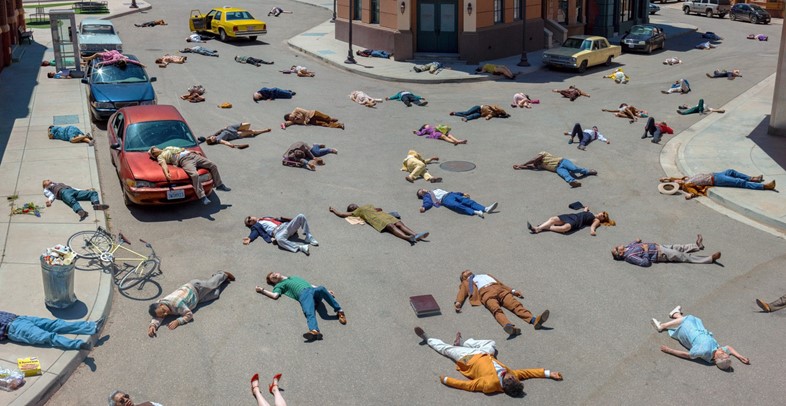
Looking back at the moment when everything was a whirling blur of chaos, Prager invites the viewers to collaborate, weaving their own ideas of what is happening as the drama unfolds. “This was a time that was so stressful because it was about everything all at once,” she says. “That’s why I kept the ball reflective – to represent something that anybody could put whatever they couldn’t grasp or felt out of their control, whatever that meant for them, so that we can process this together. When somebody views the work, there is a two-way flow because the piece is never done until there’s an emotional response thrown back at it.”
The cumulative effect of Part Two: Run is out of the world, yet wholly plausible – a reality so strikingly bizarre that it actually occurred. “Two days before my first premiere in London, this large, perfectly smooth silver ball that was part of a Christmas decoration went crashing through Piccadilly Circus and Tottenham Road at night. Cars were literally swerving – this came to life,” says Prager, a self-professed fan of The Twilight Zone. And in that moment, she inadvertently accomplished just what she set out to do: “I wanted this to feel like a retro future that is real. This is us in an alternative universe or different plane.”
Alex Prager – Part Two: Run is on view from 19 January – 4 March 2023 at Lehmann Maupin in New York.
